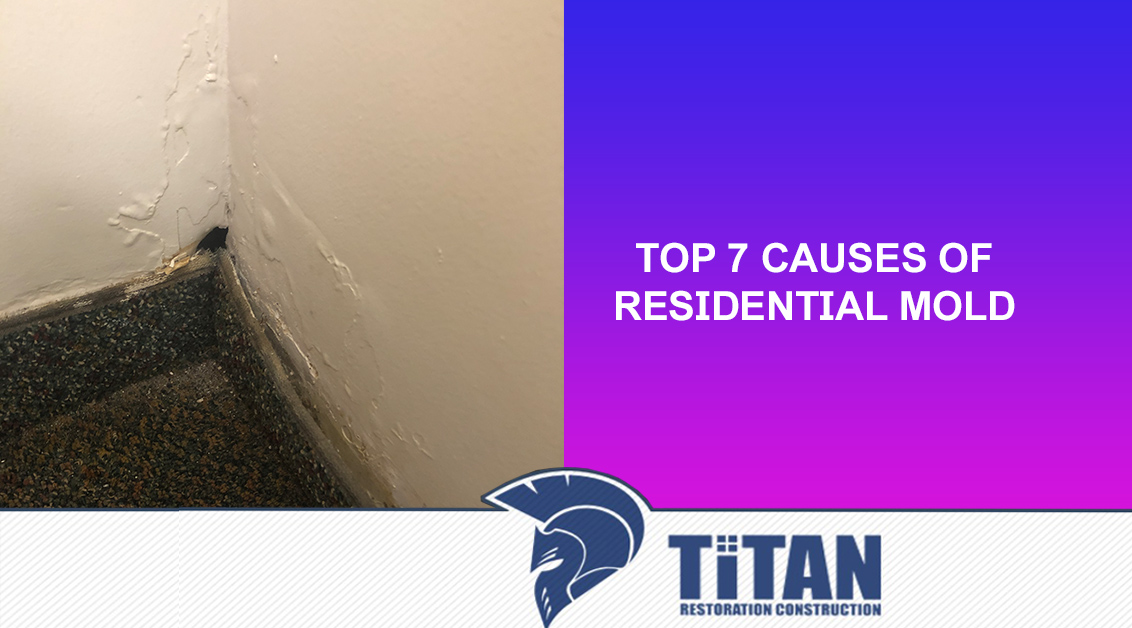Outdoor mold helps in the decomposition of organic matter and hence an essential component of nature. However, indoor mold is a massive headache to any property owner and can present several health hazards and property damage. The ability of mold spores to be ubiquitous and move around your house effortlessly makes tackling mold growth a daunting task.
For homeowners, to prevent mold growth or to identify the root cause, it is ideal to understand the common causes of mold growth in residential environments. This blog post features the top 7 reasons for mold growth in houses across the United States.
Leaking pipes
Leaking pipes in shower stalls, drywalls, under-sink cupboards, and ceiling can offer the perfect condition for mold growth. Pipe leaks in crawlspaces such as drywalls and ceilings are hard to detect until it’s too late.
Resort to the following actions if you observe pipe leaks in your house:
- Repair the rupture promptly
- Dry out the water damaged area within the first 48 hours
- Regulate moisture concentration using dehumidifiers
- Remove carpets from the affected area
Faulty air conditioning system
A faulty air conditioning system can second mold growth; the blockage in the condensate drain or the drying out of the filter can trigger leaks. The drain line of air conditioning systems is usually full of dust and bacteria, and the leakage of these pipes can present favorable conditions for mold and mildew growth.
Flooding
Any natural disaster that can lead to flooding of your property can contribute to mold growth. The type of mold growth or severity of the aftermath could depend on the kind of water damage you are dealing with.
For example, there are three types of water damage:
Clean water or Category 1: Category 1 water damage is water damage from broken pipes, overflowing sinks, or rainwater. Health risks associated with category 1 water damage is low, provided you respond to the situation in less than 48 hours.
Greywater or Category 2: Some common greywater sources are equipment discharges, chemical wastes like detergent, laundry, and soap. Category 2 water damage can pose mild to severe contamination risks. Greywater can promote microbial growth, and the severity of the condition usually escalates with time. Both direct and indirect exposure to greywater damage can affect your personal health and property.
Blackwater or Category 3: Waters from sewers or water containing grease, oil, urine, etc., are ideal examples of black water. Presumably, this water type hoards bacteria, viruses, and other toxic allergens, which makes it contagious.
Poor ventilation
Poor ventilation is another major cause of residential mold growth. Keeping the windows and doors shut usually restricts airflow within your house, and this helps mold spores to settle in one place and become colonies. With the doors and windows shut, the steam from electrical appliances, including heaters and cooking, can generate humidity and make the surfaces damp and sticky to present excellent conditions for mold growth. This is one of the reasons why there is an increased risk of mold growth in the winter months.
Wet laundry or clothes
Mold colonies thrive on clothes easily under the right conditions. The main reasons for mold growth on clothes are humidity variations and lack of ventilation. Mold requires organic substances like drywall, wood, and fabric to thrive.
The dampness of wet clothes can attract and house mold colonies. Mold can thrive in 24 to 48 hours; if your clothes remain wet for a prolonged period, they can easily attract mold growth.
Poor maintenance
Broken pipes, clogged bathrooms, poor window, and door seals can all lead to mold growth. Failing to maintain your house as needed can lead to mold growth. We recommend getting your home inspected by a professional at least twice a year to keep the mold growth in check. Mold growth, if overlooked, can even affect the structural integrity of your property.
Roof leaks
Those droplets that you see on the ceiling result from water damage or subsequent leaks over months. Most property owners overlook this fact and end up paying a lot more than they should be spending in the first place to fix the issue. Ceiling or roof leaks can easily go unnoticed, and second mold growth thereby affecting your health and the property’s structural integrity.
Precautions against ceiling water leaks
Ceiling water leaks are a common household issue. As a property owner, you need to inspect your plumbing, roofing, and potential appliances at least twice every year. Give special priority to your roofing system and include the following areas in your checklist:
- Roof vents
- Fix Walls and Dormers
- Brick chimney perimeters
- Shingles/roofing tiles
- Contact specialist
It is essential to identify the root cause and take immediate actions to contain mold growth. Removing mold also requires expertise and industry-grade equipment, including air quality testers to humidity meters; this is why we recommend a professional mold removal company to remove mold and prevent recontamination.


0 Comments